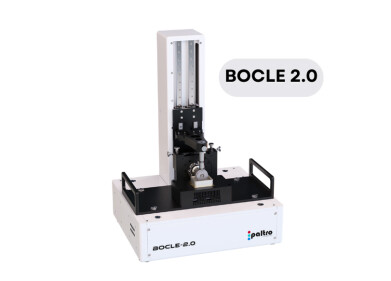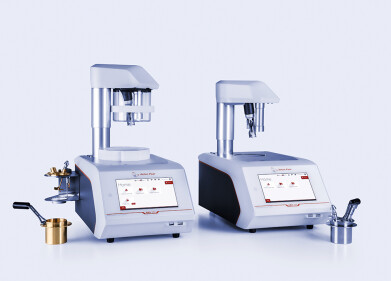Lubricant analysis
Smart Analysis of Environmentally Acceptable Lubricants (EALs)
Dec 13 2022
With the current global call for a significant reduction in carbon footprint, more and more industries need to find sustainable solutions for their entire businesses. One of these solutions: the so-called Environmentally Acceptable Lubricants (EALs). These are biodegradable, minimally toxic and non-bio accumulative lubricants which are either bio-based (e.g. vegetable oils) or synthetic (e.g. esters, PAGs or PAOs) and help users meet the requirement to minimize the environmental impact of their machinery.
As with mineral-oil-based lubricants, manufacturers and users need to ensure that the product fulfills the relevant specifications (e.g. ISO 3448 viscosity grades). The most important specification parameters for the base fluids as well as for the final “EAL blend” are kinematic viscosity (typically at +40 °C and +100 °C but also at other temperatures like 0 °C or even -20 °C), the Viscosity Index (VI) as well as density at +15 °C. Since not every sample needs to be tested at all temperatures mentioned above, different instruments may be suited best.
Welcome to New Viscometry
For testing of your EAL sample at temperatures above zero and obtaining the VI according to ASTM D2270 in record-breaking time, Anton Paar’s SVM 4001 kinematic viscometer is the perfect solution. With its innovative double cell design – consisting of not one but two separate measuring cells – simultaneous testing at two different temperatures is possible. This not only reduces the operator time significantly but together with a minimal sample volume of 2.5 mL, costs can be cut to a minimum.
As viscosity values often change during the development and blending process by orders of magnitude, flexibility of the measuring device is necessary. For this purpose, SVM 4001 offers a wide viscosity range of 0.2 mm²/s up to 30,000 mm²/s with each measuring cell, making the search for, and the change of, individual capillaries a matter of the past. In addition, all determinations can be performed between +15 °C and +100 °C and are fully compliant with ASTM D7042 for kinematic viscosity as well as ASTM D4052 for density. If ASTM D445 results are required, the integrated ASTM bias correction automatically calculates and displays the desired values.
For even more flexibility, Anton Paar’s SVM 3001 kinematic viscometer offers a wider temperature range, starting from -60 °C all the way to +135 °C. With the integrated Peltier thermostatting, the instrument facilitates fast temperature changes (up to ±20 °C/min) for accurate viscosity index determination. Down to -20 °C, no external chiller is required, freeing bench space for other essential equipment.
To further reduce user effort, both instruments, SVM 4001 and 3001, can be automated with one of Anton Paar’s Xsample sample changers for up to 71 unattended measurements as well as completely automated cleaning and drying with up to three solvents.
These are just a few highlights showing how SVM kinematic viscometers will help you change to more sustainable solutions, while making your lab procedures even more efficient.
Digital Edition
PIN 26.1 Feb/Mar 2025
March 2025
Analytical Instrumentation - Elemental Analysis for Quality and Process Control at Refineries, for Lubricants and Wear Metals in Engine Oils - Synthetic Lubricants: New Developments - Scaling...
View all digital editions
Events
Apr 08 2025 Birmingham, UK
Apr 08 2025 Kielce, Poland
Apr 08 2025 Ravenna, Italy
Apr 08 2025 Southampton, UK
Apr 08 2025 London, UK



















